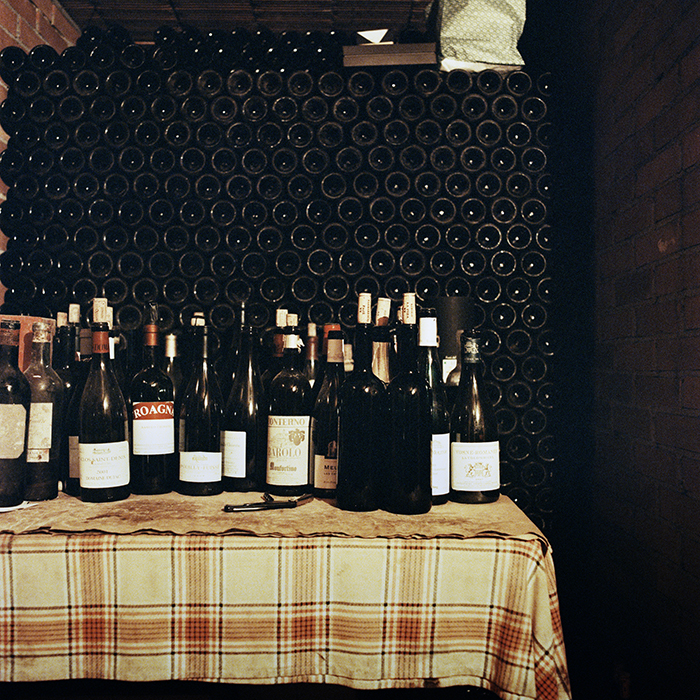The fine art of feasting
Author: Guest Blogger

Photograph: Jason Lowe
Champagne: A bottle of Champagne is usually cracked open as an apéritif. If snacks are also required, then no more strenuous action needs to be taken than opening a bag of crisps or roast, salted nuts. I’d steer away from strange flavours or the penetrating pong of bright orange reconstituted potato (especially with a good glass in my hand), but salted crisps or cashews are ideal as the salt is a good foil for Champagne’s fierce acidity. Other easy small bites include gougères, the cheese star biscuits from Nigella Lawson’s book How to Eat and, in particular, cheese straws: the yeasty depth of Champagne is perfectly met by the rich savour of Parmesan cheese.
Smoked salmon: Zesty, citrusy wines (such as Sauvignon Blanc, Gavi, or Grüner Veltliner) act like a squeeze of citrus over the smoked fish. I prefer fuller versions, where some of the wine has been enriched by time in barrel, as this meets the oily texture of the fish. With buttery bread, the roundness of Chablis (or Chardonnay from elsewhere) is appealing and, of course, Chablis also has a dash of lemony zip. A favourite choice with the richness of smoked salmon is Chenin Blanc from the Loire. Dry, off-dry or even medium, these wines have a winning combination of texture and acid that brings succulence to the fish. The smokiness of the fish is also well matched by the toasty edge of crisper whites that have been fermented in oak barrels. Likewise, the peaty-bonfire-iodine smell of Islay whisky, reminiscent of sea and land at once, brings out the smoky-savoury salmon flavours. Maybe water it down, one part water to three parts whisky.
Roast ham: The salty pink meat of a roast gammon joint is beautifully complemented by the dry sweetness of ripe Grenache. I’m thinking less of the pumice and herbal rasp of a Southern Rhône wine (although these are good) and more of the baked-mulberry richness of an old-vine Grenache from Australia’s Barossa, or the lavish fruit of wines made from the old Garnacha vines on the hillsides of Aragon in Spain (Calatayud, Cariñena and Campo de Borja are the DOs to look for). The ripe red-berry taste of Grenache echoes the kind of flavour explosion you have when you put Cumberland sauce with roast ham and, in fact, the three go together well. Alternatives that work in a similar vein include juicy Carignan (from Chile or the Languedoc); Loire Cabernet Franc (Chinon, Bourgueil, St Nicolas de Bourgueil, Saumur or Saumur-Champigny) from a warm year; or ripe Pinot Noir from Australia, Chile or New Zealand.
White wines can also be very good with a cooked ham joint. Dry Riesling from Alsace, New Zealand, Australia or Austria; white Côtes du Rhône; or Australian Marsanne will emphasize the succulence of the meat.
Mince pies: The crumbling pastry and luscious dried fruit of mince pies suit the molten raisin flavour of a sweet Oloroso or Cream Sherry. It somehow works with dry Sherry too, though pick one that’s robust – an Amontillado or a punchy Fino rather than a Manzanilla. Mince pies are also gorgeous with the sweet, floral Moscato di Pantelleria, made on the island of Pantelleria, a speck of Italy that lies between Sicily and Tunisia.
Boxing Day leftovers, aka the great Turkey Buffet: Now is the moment to pull out the aromatic Pinot Gris that goes so well with turkey and trimmings, but that you didn’t feel like drinking on Christmas Day itself. Suddenly, the day after the excess, a gently perfumed, chilled white, perhaps off-dry (yes – sugar is always a welcome hangover aid), is much more appealing.
Of course, if you’ve got Christmas dinner wines as well as food to spare they will taste great all over again. Otherwise, bright, young, refreshing reds are good with the firmer consistency of cold meat – think cheap young Claret, Dolcetto or Beaujolais Villages. In our family, with Christmas Eve turkey sandwiches and Boxing Day leftovers, we like to drink white wines from the Rhône (Côtes du Rhône or white Châteauneuf). These are wintry whites with a hint of warmth, and a subtle taste of ripe pears, white peaches, sushi ginger and heavy blossom, that have a celebratory feel and go well with all the pork products (spicy sausageballs, sausagemeat and chestnut stuffing, chipolatas wrapped in bacon) that we have on our plates alongside the turkey and creamy, clove-scented bread sauce. Failing all those, pull out the Prosecco. Its gentle bubbles and slight sweetness are a real perk-up.
Extracted from Victoria Moore’s book The Wine Dine Dictionary (£15).
Browse our full Christmas range on bbr.com; order by 12 noon tomorrow (20th December) for guaranteed Christmas delivery.


